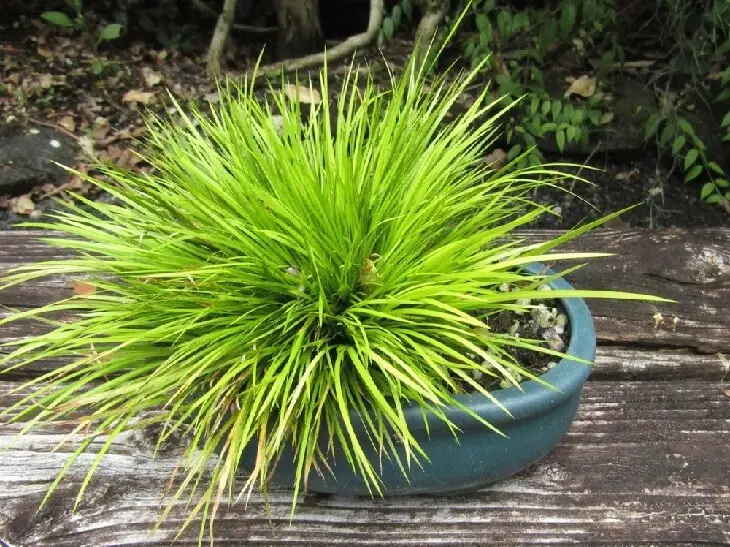Akorus pusilus

Acorus pusillus is widespread in eastern and south-eastern Asia. This plant can be found on fast-flowing, stony forest streams and waterfalls. During high tides, the water level rises considerably and the plants are exposed to strong currents.
Akorus pusilus is a long-established ornamental plant and there are many varieties in nature. It is the dwarf variety Pusilus, which is only about 10 cm tall in aquarium conditions. Wild forms may reach a height of 30-50 cm. Its leaves are fairly thick and hardy. Many aquarists therefore keep it together with cichlids, which cause damage to plants with soft leaves. Overall, the plant is easy to keep and requires little maintenance.
Akorus pusilus is often assumed to have limited application in aquaristics. However, it is capable of growing normally in aquarium conditions. A precondition is that the shrub is not buried in the substrate, but attached e.g. to stones or snags as is the case with various Anubias and Javanese fern species. The roots eventually attach themselves to hard surfaces.
It grows very slowly. Gradually the rhizome forms lateral shoots that can be detached for propagation. This plant is best suited for the front of the aquarium.
Water parameters: temperature 18-23° C, pH 6.0-7.5. We recommend feeding with micro- and macro nutrients and adding CO2 to the water. Supply the aquarium with a relatively strong current flow by means of a pump or by placing the suction nozzle of the water filter along the rear wall of the aquarium.
Medium light of 10-12 hours per day.
Acorus pusillus can be grown as a ground plant in a humid greenhouse environment. The substrate will need to be kept slightly moist at all times. It can overwinter in colder periods but without frost.
This herbaceous ornamental plant is particularly well suited for rocky running water and cold water ponds.
Reproduction
To propagate Acorus Pusillus, cut off a side shoot and plant it in a new location, e.g. on a driftwood, by attaching it to it with fishing line or string. In time, the line can be cut away once the roots have attached the plant to the driftwood.



